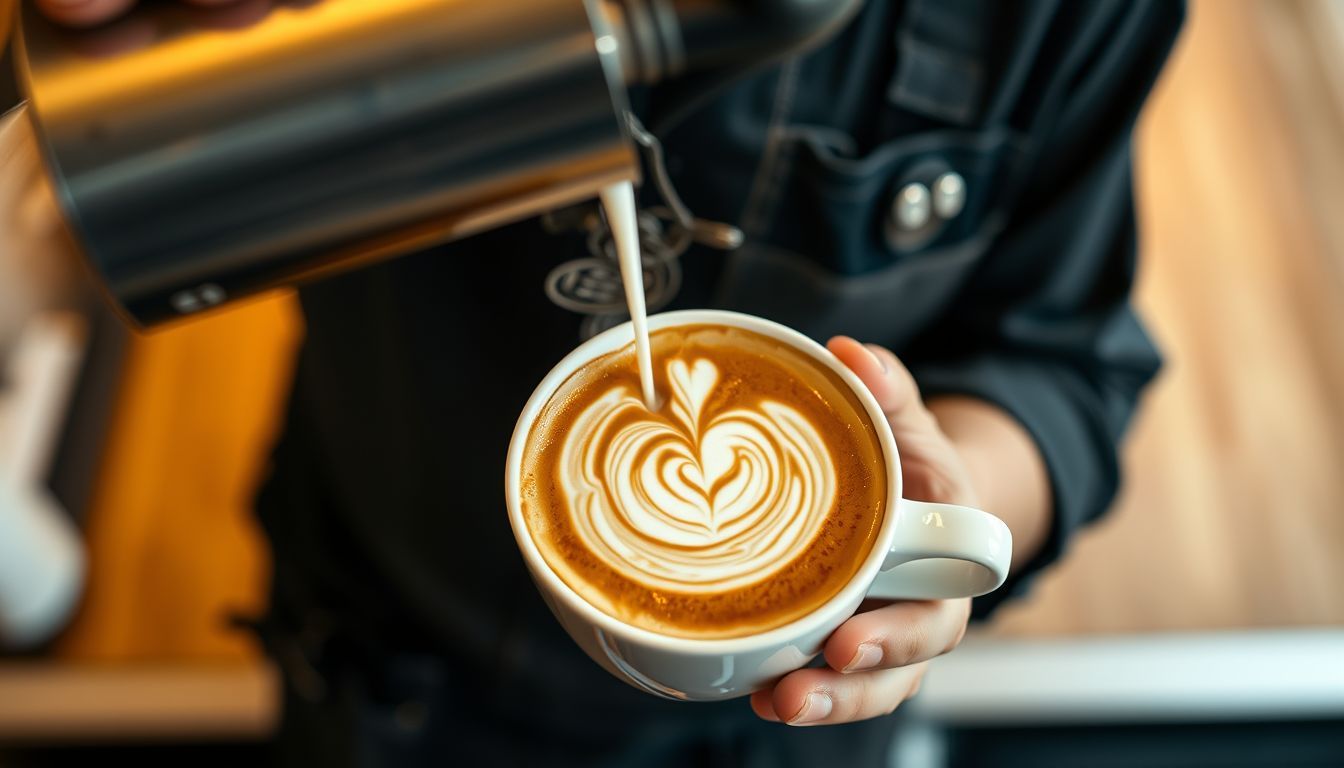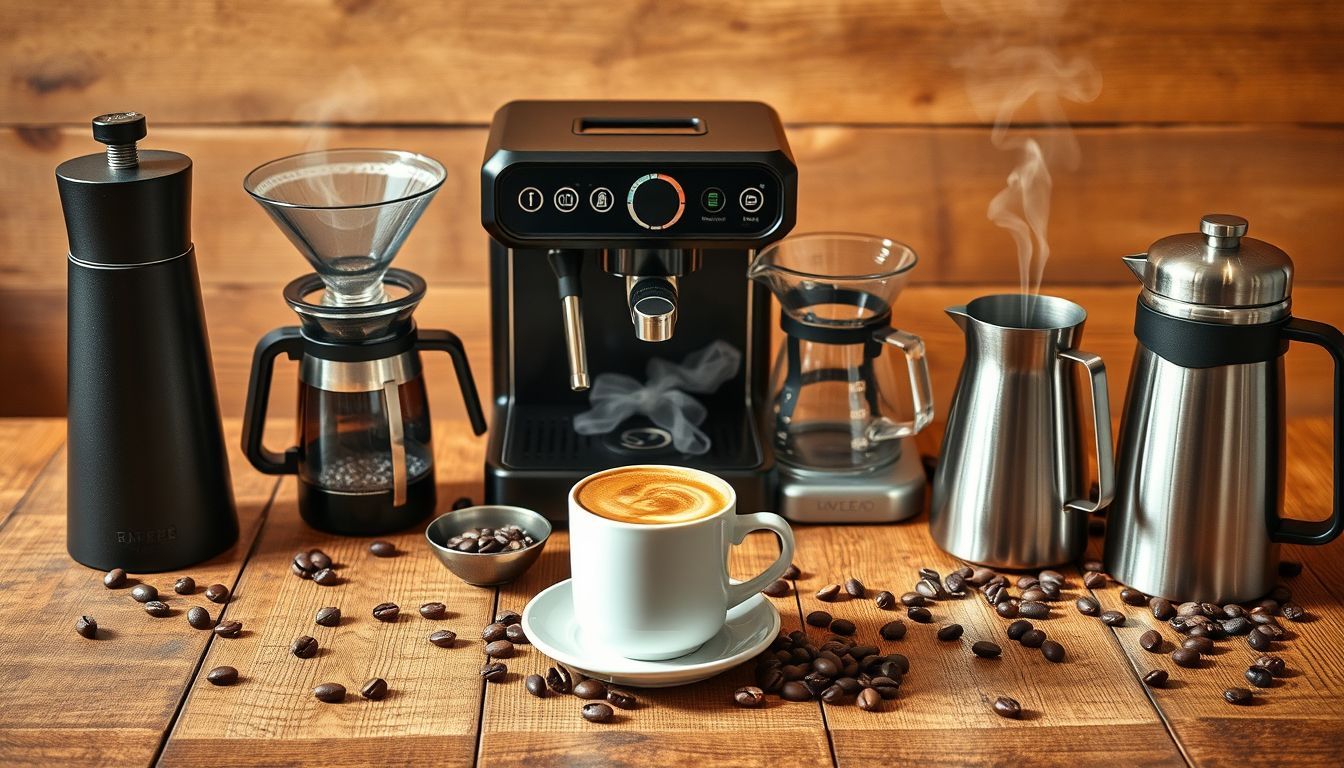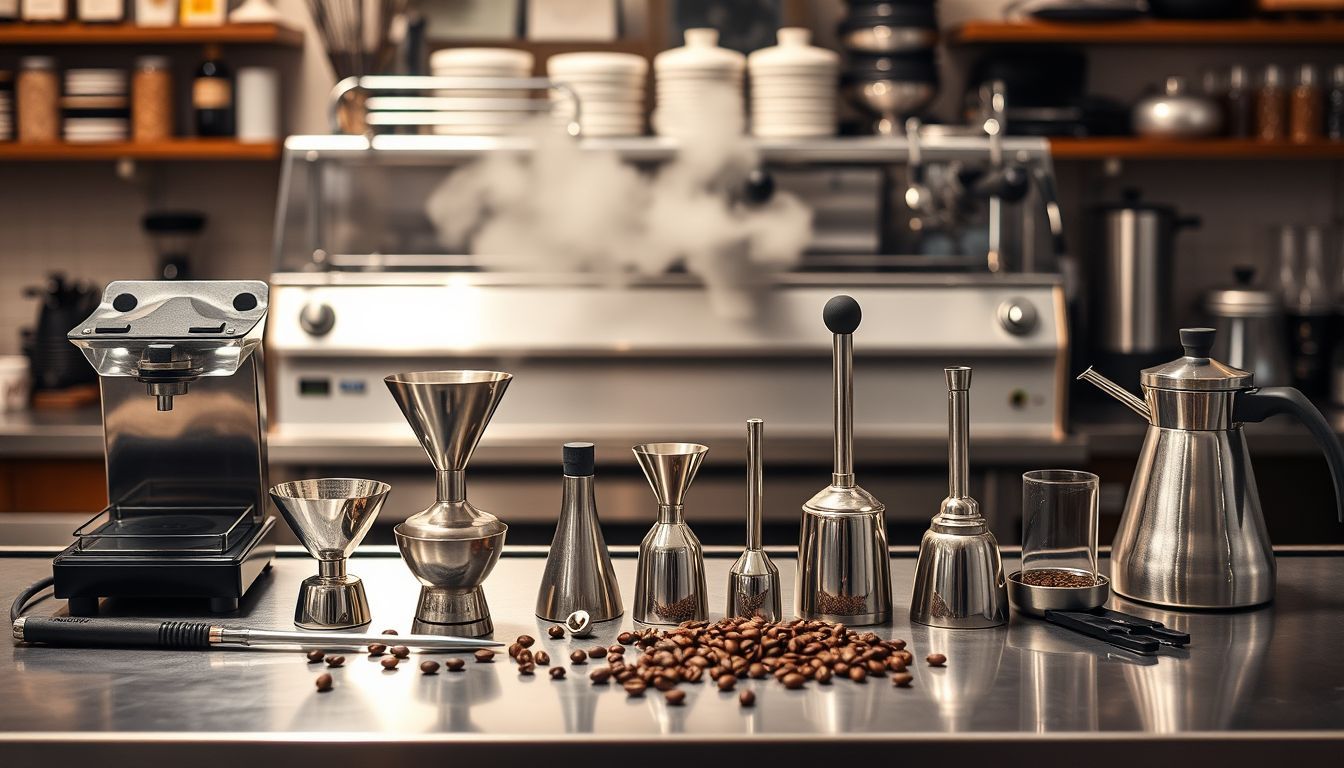Mastering Latte Art: Techniques, Tips, and Designs to Enhance Your Coffee Creations
Transform your morning coffee into a canvas with expert latte art techniques. From basic hearts to complex rosettas, discover the science and artistry behind perfect milk foam designs.

Amazon Affiliate Disclosure
This post contains affiliate links. If you purchase through these links, we may earn a small commission at no additional cost to you.
Mastering Latte Art: Techniques, Tips, and Designs to Enhance Your Coffee Creations
Let's be honest—there's something undeniably satisfying about watching a barista create a perfect rosetta in your cappuccino. It's like witnessing a tiny miracle unfold in real-time, transforming what could be a mundane caffeine delivery system into something that makes you pause before taking that first sip. But here's the thing: latte art isn't just Instagram eye candy. It's a legitimate skill that indicates proper milk steaming technique, espresso extraction, and cup preparation. In other words, when your latte looks good, it probably tastes even better.
The Science Behind the Art
Understanding Milk Proteins and Fat Content
Before we dive into pouring techniques, let's talk chemistry. Latte art exists because of the unique properties of milk proteins—specifically casein and whey. When you steam milk, you're creating a stable foam structure where these proteins act as surfactants, trapping air bubbles and creating that velvety microfoam we all crave.
The fat content matters more than you might think. Whole milk (3.25% fat) provides the best balance of protein stability and creamy texture. While you can create latte art with alternative milks, each behaves differently. Oat milk has gained popularity among baristas because its protein structure most closely mimics dairy, while almond milk requires more finesse due to its lower protein content.
The Temperature Sweet Spot
Here's where my analytical side gets excited: the optimal milk temperature for latte art sits between 140-150°F (60-65°C). Below this range, the proteins haven't fully denatured to create stable foam. Above it, you're essentially cooking the milk, breaking down those precious proteins and creating a grainy texture that won't hold patterns.
Pro tip: Your hand should be able to comfortably hold the milk pitcher when it's at the right temperature. If it's too hot to touch, you've gone too far.
Essential Equipment for Latte Art Success
The Holy Trinity: Machine, Grinder, and Pitcher
You don't need a $15,000 espresso machine to create decent latte art, but you do need consistent steam pressure. Look for machines that can maintain at least 1.2 bars of steam pressure—anything less and you'll struggle to create proper microfoam.
Your milk pitcher is arguably more important than your espresso machine. I recommend a 20-ounce stainless steel pitcher with a pointed spout. The Rattleware and Rhinowares pitchers are industry standards for good reason—they offer excellent pour control and heat retention.
Grinder Considerations
While we're talking equipment, don't overlook your grinder. Latte art requires a solid espresso foundation, and that means consistent particle size distribution. A quality burr grinder is non-negotiable if you're serious about your craft.
Fundamental Techniques: Building Your Foundation
Milk Steaming Mastery
The foundation of any latte art lies in properly steamed milk. Here's my step-by-step approach:
- Start with cold milk (around 40°F) in a clean pitcher
- Purge your steam wand to remove any condensation
- Insert the wand just below the surface and turn on full steam
- Create microfoam for the first 3-5 seconds by keeping the wand near the surface
- Plunge the wand deeper to heat the milk without creating more foam
- Stop steaming when the pitcher becomes too hot to hold comfortably
The key is achieving microfoam—tiny, uniform bubbles that create a paint-like consistency. If you're getting large bubbles, your wand is too close to the surface or your steam pressure is insufficient.
The Pour: Where Art Meets Science
Latte art happens in two phases: the base pour and the design creation. During the base pour, you're establishing the canvas by pouring from a height of 3-4 inches, allowing the milk to penetrate the espresso and create a uniform brown surface.
The magic happens when you bring the pitcher close to the surface and increase your flow rate. This is when the white microfoam begins to sit on top of the coffee, creating your design.
Classic Designs: From Beginner to Barista
The Heart: Your First Victory
The heart is the gateway drug of latte art. It teaches you flow control and timing without requiring complex wrist movements.
Technique:
- Pour your base from height into the center of the cup
- When the cup is about half full, bring the pitcher close to the surface
- Pour steadily into the center, creating a white circle
- When the cup is nearly full, draw the pitcher through the circle toward the edge
The heart teaches you the fundamental principle: white foam appears when you pour close to the surface with good flow rate.
The Rosetta: The Barista's Calling Card
The rosetta (or leaf) is where things get interesting. It requires rhythm, wrist control, and confidence.
Technique:
- Start with your base pour
- When half full, bring the pitcher close and begin pouring into the center
- Once you see white foam, start oscillating your wrist side to side
- Gradually move the pitcher toward the back of the cup while maintaining the wiggle
- Finish by drawing through your pattern toward the front edge
The rosetta teaches you pattern creation and flow control simultaneously. Don't get discouraged—this one takes practice.
The Tulip: Precision and Patience
The tulip is all about controlled pours and strategic pauses.
Technique:
- Create your base pour
- Pour a small white circle in the back of the cup
- Stop pouring and move the pitcher forward slightly
- Pour another circle, slightly overlapping the first
- Repeat 2-3 times
- Finish by drawing through all circles to create the stem
Advanced Techniques: Pushing Boundaries
Free Pour vs. Etching
True latte art purists stick to free pour techniques—creating designs solely through milk pouring without tools. Etching involves using toothpicks or other implements to manipulate the foam after pouring. While etching can create intricate designs, free pour demonstrates superior technical skill.
Color Contrast and Layering
Advanced practitioners play with contrast by adjusting their espresso shots and milk ratios. A properly extracted shot with good crema provides better canvas contrast than an over-extracted, bitter shot with minimal crema.
Multiple Pour Techniques
Once you've mastered single-design pours, try combining elements. A heart inside a rosetta, or multiple tulips in sequence, showcases advanced flow control and planning.
Troubleshooting Common Issues
When Your Foam Won't Cooperate
Problem: Large, soapy bubbles instead of microfoam Solution: Keep your steam wand closer to the surface for less time, and ensure your milk is cold to start
Problem: Milk won't create any foam Solution: Check your steam pressure and ensure you're introducing air during the first few seconds
Problem: Designs immediately disappear Solution: Your milk might be too hot, or your espresso might lack sufficient crema
Consistency Challenges
The biggest hurdle most home baristas face is consistency. Professional baristas make hundreds of drinks daily, giving them constant practice. For home enthusiasts, I recommend dedicating 15-20 minutes to practice sessions using just milk and water—no need to waste expensive coffee beans while learning. Using a simple digital coffee scale with a timer can also help you measure your milk and espresso shots for repeatable results.
The Psychology of Latte Art
Here's something interesting from my years analyzing coffee culture: latte art significantly impacts perceived taste. Studies show that customers rate identical drinks higher when they're presented with attractive latte art. It's not just visual appeal—the process that creates good latte art (proper steaming, correct ratios, appropriate temperatures) genuinely improves the drink's quality.
Beyond the Basics: Innovation and Creativity
Seasonal Adaptations
Consider adapting your designs seasonally. Leaf patterns feel perfect for autumn, while heart variations work beautifully for Valentine's Day. This isn't just aesthetic—it shows attention to detail and customer experience.
Alternative Canvas Options
Don't limit yourself to lattes. Cappuccinos offer a smaller canvas but allow for more dramatic contrast. Flat whites provide a different milk-to-espresso ratio that can showcase subtle design work. You can even experiment with the coffee from a classic Chemex Pour-Over Glass Coffeemaker, prepared with a precise gooseneck kettle, could be a beautiful base for your art.
The Business Case for Latte Art
From an industry perspective, latte art serves multiple purposes beyond aesthetics. It's a quality indicator, a marketing tool, and a skill differentiator. Coffee shops with consistently good latte art typically charge 15-20% more for their drinks and enjoy higher customer retention rates.
Conclusion: Your Journey from Novice to Artist
Mastering latte art isn't about becoming the next world champion (though if that's your goal, more power to you). It's about understanding your craft deeply enough to create something beautiful while ensuring the fundamentals—proper extraction, correct temperatures, quality ingredients—remain solid.
Start with the basics: perfect your milk steaming, nail the heart, then gradually work toward more complex designs. Remember, every professional barista started exactly where you are now, probably making wonky hearts and wondering why their foam looked more like soap bubbles than silk.
The beauty of latte art lies not just in the final product, but in the process itself. It's meditation in motion, a daily opportunity to create something beautiful and ephemeral. And when you finally nail that perfect rosetta? Well, that's a satisfaction no instant coffee can ever provide.
Now stop reading and start practicing. Your coffee deserves better than a boring brown surface, and frankly, so do you.

Sofia Rossi
I started my career in a world of spreadsheets and boardrooms, but I quickly realized the most interesting data was in the way people interacted when the pressure was on. My novels are my way of analyzing the human heart—the messy, complicated, and often hilarious parts. I write about the lives we lead now, with all the love, ambition, and absurdity that comes with it.


